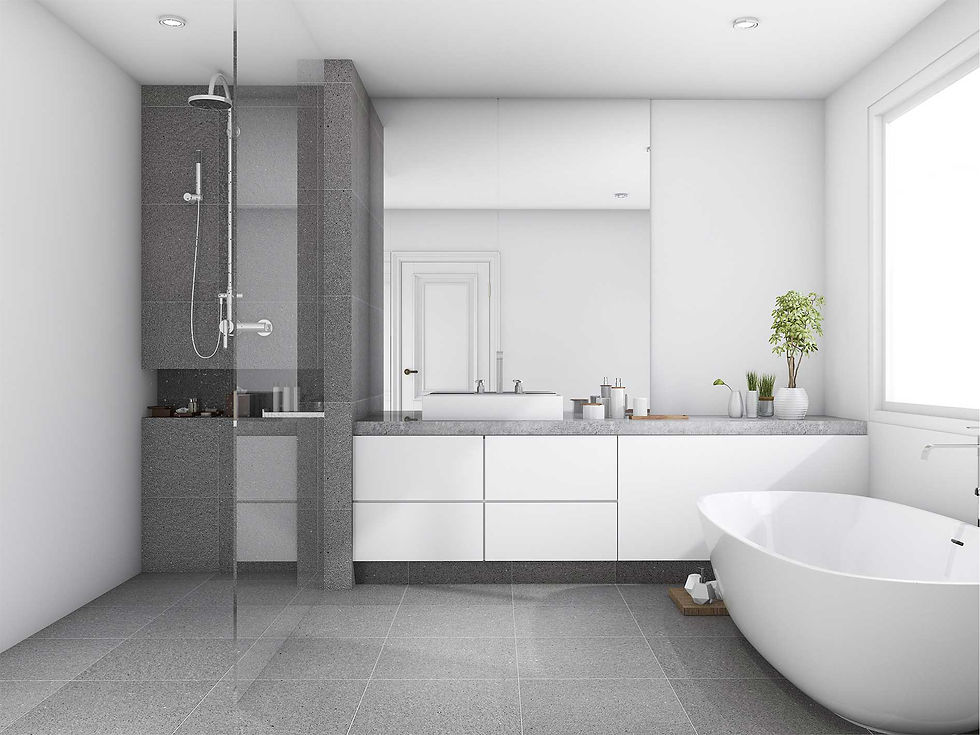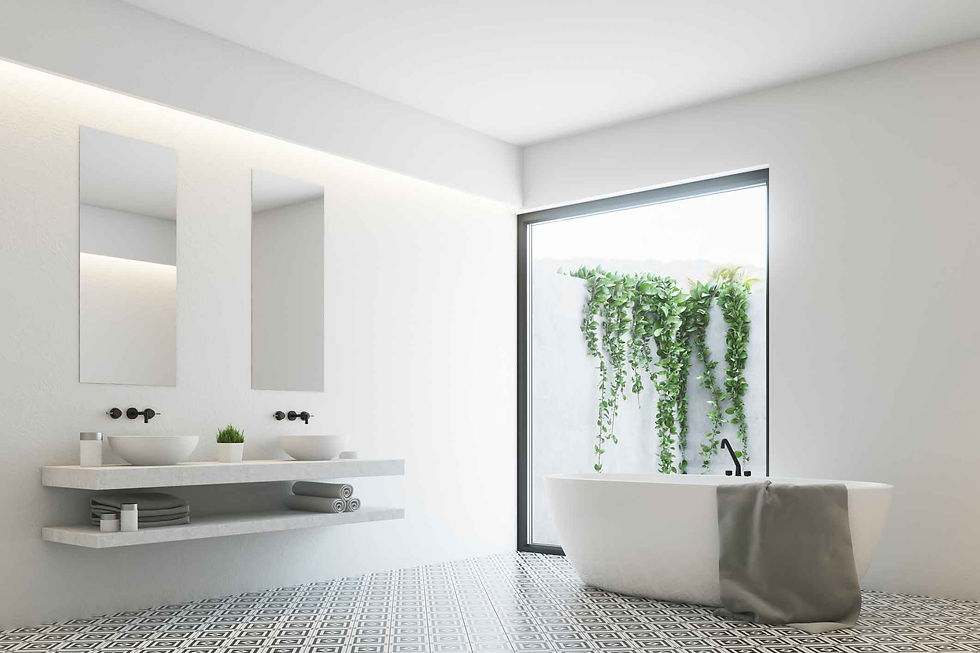Constructing a complaint and defect-free bathroom
- Jarratt Hadid
- Mar 2, 2023
- 3 min read
Updated: May 29, 2024
Constructing a bathroom wet area that complies with Australia Building Code and Australian Standards is essential to ensure the safety, durability, and comfort of your bathroom. Australian Standard AS 3740 outlines the requirements for the waterproofing of internal wet areas in residential buildings. This article will provide a detailed overview of the critical steps to follow when constructing a bathroom wet area that complies with the Australian Building Code and AS 3740. Each requirement listed in AS 3740 will be incorporated and explained in detail. Building Inspections Sydney are the industry specialists for bathroom inspections and can provide professional inspections during the critical stages of the bathroom construction and at the completion of the bathroom construction.

1. Design
The first step in constructing a compliant bathroom wet area is to develop a comprehensive design. A well-designed bathroom will ensure that all the necessary elements are in place, and the bathroom functions correctly. The design should include details such as the location of the shower and other fixtures, the slope of the floor, the type of waterproofing system to be used, and other essential details. A qualified professional such as an architect or builder should be consulted to ensure the design meets all relevant building codes and standards.
2. Substrate Preparation
The substrate is the surface upon which the waterproofing membrane is applied. The substrate must be clean, dry, and free from any debris or contaminants. The surface should be level and free from any undulations, depressions, or protrusions that may cause the waterproofing membrane to be uneven. All joints, cracks, and voids in the substrate must be filled with a suitable filler. The substrate should be cured and allowed to dry for a minimum of 24 hours before applying the waterproofing membrane.
3. Waterproofing
The next critical step is waterproofing. The waterproofing system must be applied to all surfaces that will be exposed to water, including the walls and floors of the shower area. The type of waterproofing system used will depend on the specific requirements of the bathroom and the materials used. The waterproofing system should be applied strictly in accordance with the manufacturer's instructions and AS 3740 requirements.
There are two types of waterproofing systems: sheet and liquid.
a) Sheet Waterproofing System
The sheet waterproofing system is installed in large sheets, typically made from PVC, bitumen, or rubber. The sheets are cut to size and laid over the substrate before being adhered to the surface with a suitable adhesive. The sheets are then sealed at the joints and around penetrations with a suitable sealant.
b) Liquid Waterproofing System
The liquid waterproofing system is applied in liquid form directly onto the substrate. The liquid membrane is typically made from polyurethane or acrylic. The liquid is applied with a brush or roller, and multiple coats are applied to ensure complete coverage. The membrane is then cured for a minimum of 24 hours before tiling.
5. Professional inspection of the waterproofing membrane
Waterproofing is a crucial part of any construction project, especially in wet areas such as bathrooms, kitchens, and laundries. The waterproofing membrane is the first line of defence against water damage and plays a critical role in protecting the building structure and its occupants. Engaging a building inspector to inspect the recently constructed waterproofing membrane before the tiling is installed is an essential step to ensure that the membrane is installed correctly and is effective in preventing water damage.
6. Drainage
Proper drainage is a critical aspect of any compliant bathroom wet area. The floor must be sloped towards the drain, with a minimum fall of 1:100 as specified in AS 3740. The drain must also be positioned correctly to ensure water is effectively drained away. The size and type of drain used will depend on the specific requirements of the bathroom and the materials used.
7.Tiling
Once the waterproofing and drainage have been completed, the next step is tiling. Tiles should be selected that are suitable for use in wet areas, and should be installed by a professional to ensure a high-quality finish. The tiles should be installed over the waterproofing membrane using a suitable adhesive. The grout used between the tiles should be a waterproof grout, and all joints and corners should be sealed with a suitable sealant.

8. Finishing Touches
The final step is to install any remaining fixtures, such as the showerhead, taps, and other accessories. It is essential to ensure that all fixtures comply with relevant Australian Standards.
9. Final inspection by a professional building inspector
Engaging a building inspector to inspect the recently constructed bathroom is essential to ensure compliance with building codes and standards, identify defects, protect against poor workmanship, provide peace of mind, and protect against future liability. It is recommended that homeowners engage a building inspector to inspect any newly constructed bathroom to ensure it meets all relevant requirements and is safe, durable, and free from defects.


Comments